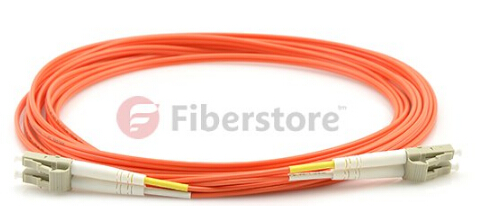What Is The Difference Between Singlemode SFP and Multimode SFP
The singlemode SFP and multimode SFP here mean the SFP transceivers which work at different types of optical fibers, ie simglemode SFP will work with singlemode fiber, while multimode SFP will work with multimode fiber. So, what’s the different between them? And what should we notice when using them. Today, we are going to have a discussion around this topic.
Singlemode SFP vs Multimode SFP
Singlemode SFP
Singlemode fiber (SMF) has much tighter tolerances for optics used. The core is smaller and the laser wavelength is narrower. This means that SMF has the capability for higher bandwidth and much longer distances in transmission. Singlemode SFPs (SMF SFPs) work mainly in 1310nm and 1550nm wavelength and is mostly used in long distances transmission environment reaching 2km, 10km, 40km, 60km, 80km and 120km. The color coded bale clasp and color arrow on label are generally blue, yellow or purple. And the color of compatible fiber optic patch cord is yellow. The following figure is a Netgear afm735 SFP.


- Blue is the 1310nm module
- Yellow is the 1550nm module
- Purple is the 1490nm module
Multimode SFP
Multi-mode fiber (MMF) uses a much bigger core and usually uses a longer wavelength of light. Because of this, the optics used in MMF have a higher capability to gather light from the laser. In practical terms, this means the optics are cheaper. The common multimode SFPs (MMF SFPs) work in 850nm wavelength and is only used for short distance transmission reaching 100m and 500m. Though it’s not able to transport for long distance, it can transport many kind of optical signals. Their color coded bale clasp and color arrow on label are black and the used fiber optic patch cord is usually orange.


What Should We Notice When Using Singlemode SFP & Multimode SFP
- Ensure that the SFPs in both ends of the fiber patch cord are of the same wavelength. A simple method is that the color of the modules must be consistent.
- In general, to ensure the data accuracy, short-wave SFP modules use with multimode fibers (ie. orange fiber patch cord), while long-wave SFP modules use with single-mode fiber (ie. yellow fiber patch cord).
- Do not over bend or winding fiber optic cables when using them. This will increase the attenuation of light in transit.
- If you don’t use the SFP, you must use the dust plug to protect the optical bore.
Warm Tips
As we know, single mode and multimode are not interchangable. The main reason is the wave length of the laser and core size of the fiber. However, take Cisco SFP for example, there is a type of the GBIC SFP module (part number “SFP-GE-L” or “GLC-LH-SMD“) which can support both single mode and multimode fiber. But a mode-conditioning patch cord is required when using the SFP-GE-L or GLC-LH-SMD with 62.5-micron diameyer MMF. You must install a mode-conditioning patch cord between the GBIC module or SFP module and the MMF cable on both the transmit and the receive ends of the link when link distances are greater than 984 ft (300 m). In this case, Cisco do not recommend using the SFP-GE-L or GLC-LH-SMD and MMF with no patch cord for very short link distance (tens of meters). The result could be an elevated bit error rate (BER). Actually, other brand, like Brocade, also can offer the similar SFP module.
When we choosing the SFP module, we must confirm the transmission distance and wavelength we want to use in. This will help us to choose the right SFP modules more efficiently. In addition, the costs for transceiver modules which keep adding up over time will be a budget pressure for many users. To save more, we can choose the compatible module without sacrificing any quality or reliability but only with a low cost. Fiberstore, an excellent supplier, supplies 100% compatible fiber optic transceiver modules of many brands, such as Cisco, HP, Juniper, Brocade, Finisar etc. with a incredible discount that may be a good choice for you.
Article Source: Difference Between Singlemode SFP and Multimode SFP